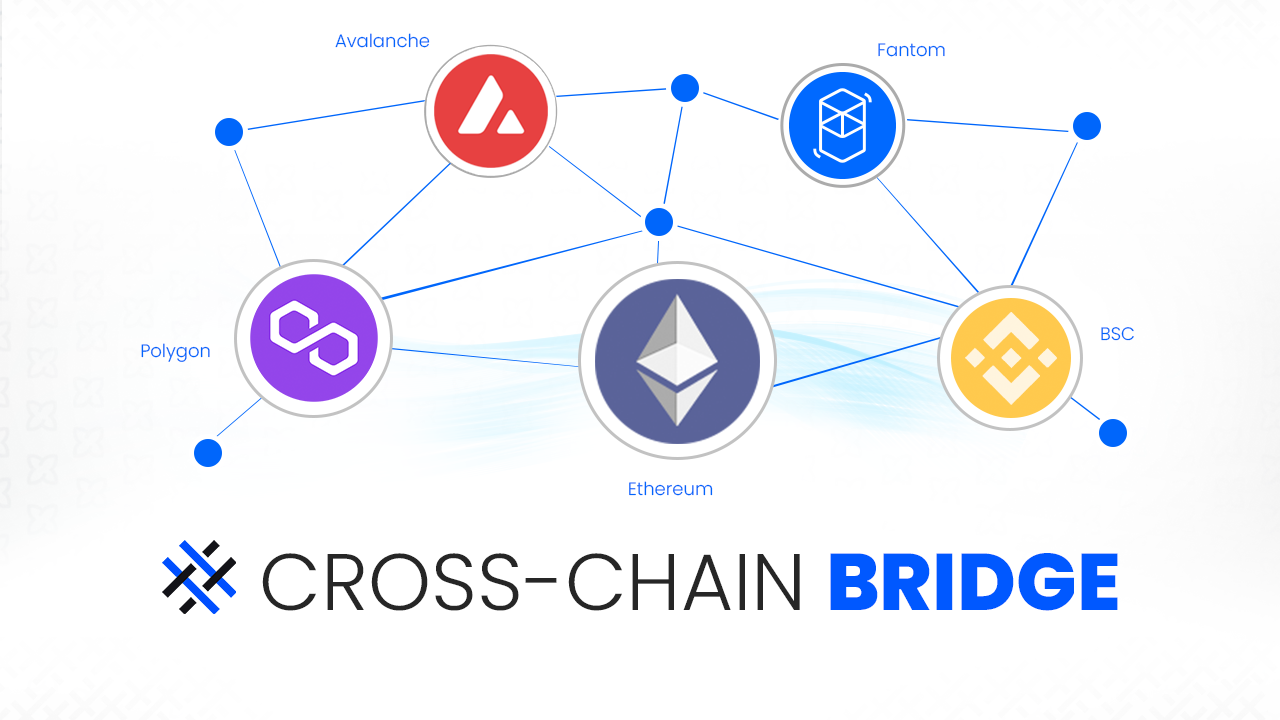Cross-chain Bridge

Learn about cross-chain bridges
At present, there are more than 100 active public chains in the market. As of early September, there are more than 40 different cross-chain bridge projects. These cross-chain bridges are dedicated to solving the problem of interoperability between different networks. A system for transferring information between blockchains. Bridge Smart Contract Development Services
The design of the cross-chain bridge is generally divided into four parts:
Monitoring: Responsible for monitoring the state of the chain.
Messaging/Relaying: Transfer of information from the source chain to the destination chain.
Consensus: Reach consensus with source chain participants to relay information to the target chain.
Signature: Cryptographically sign the information sent to the target chain.
There are four types of cross-chain bridges:
Asset-specific: Usually a “wrapped” asset, fully collateralized by the underlying asset in a custodial or non-custodial manner . Such as Bitcoin anchor currency WBTC, tBTC.
Chain-specific: A Cross chain bridge development between two blockchains, locking and unlocking tokens on the source chain, and casting packaged assets on the target chain. Such as Polygon’s PoS Bridge, Aribitrum Bridge, Avalanche Bridge, Binance Bridge, Rainbow Bridge and so on.
Application-specific (specific to an application): such as Compound Chain and Thorchain, which build independent blockchains dedicated to cross-chain lending and transactions, respectively. Another example is cross-chain aggregation transactions (THORSwap, AnySwap, O3swap), which realizes cross-chain asset exchange by building a cross-chain transaction pool. The feature of this cross-chain bridge is that it can only be used in this application, and it is difficult to extend this function to other applications.
Generalized: A protocol designed for transferring information across multiple blockchains. Like Cosmos’ IBC protocol , it is used to send messages between two heterogeneous chains (with finality guarantees).
- The scale of the cross-chain bridge
As of September 22, the total locked volume of Ethereum cross-chain bridges reached US$7.15 billion, an increase of 46.2% in 30 days. Arbitrum Bridges is the Ethereum cross-chain bridge with the largest locked volume, accounting for 36% (Dune Analytics).
In the past month, Avalanche, Fantom and Harmony have successively released liquidity mining plans, vying to attract funds. The Arbitrum bridge grew the fastest, with just $22 million locked on September 1st, growing to $2.58 billion in 20 days
- Security across chain bridges
The Build a cross chain bridge provides users with the convenience of on-chain interaction. With the increase in the demand for on-chain transactions, the scale of funds managed by the cross-chain bridge is also increasing, so it has become the favorite target of hackers. On Monday (9/20), the cross-chain protocol pNetwork was hacked and lost more than $13.08 million. In July and August alone, there were 3 security incidents in which cross-chain applications were hacked. Among them, the cross-chain protocol O3 Swap was stolen due to the network security problems of its infrastructure PolyNetwork, and the loss was as high as 610 million US dollars. It is the largest scale of DeFi attack loss.
Outlet Track — Web 3.0 Infrastructure and Value Capture
In the Web 3.0 technology stack:
The bottom layer is the P2P transport network (L0).
The upper layer is the final settlement layer (L1), that is, various public chains.
L2 includes off-chain data, computing services, oracle middleware with the aim of increasing performance.
L3 is the developer API layer.
dApp applications are located at the fourth layer (L4) and are responsible for providing products and interacting with users.
It can be seen that Web 3.0 applications need to be built on a series of infrastructures, including:
storage.
The website can provide ordinary users with a visual interface, which is more convenient to operate. Website hosting can be done through traditional cloud services such as AWS or decentralized alternatives such as ENS and IPFS systems on Ethereum.
Content-based applications such as social media and streaming media need to store text, pictures, and videos in a centralized server, or in a decentralized storage network (Filecoin, Sia, Arweave, etc.).
calculate. Every dApp contains a smart contract with program logic.
dApps on high-throughput blockchains run computation and settlement directly on-chain.
Another option is to separate computation and settlement, compute in a Layer 2 network, and then settle on-chain through a single aggregated transaction, such as Rollup.
oracle. Universal oracle networks like Chainlink provide highly secure and trustworthy services for smart contracts in a verifiable and executable manner.
External API. External APIs include centralized systems, blockchains independent of the dApp itself, and can provide many of the underlying datasets and computing services that dApps want to access. For example, The Graph’s on-chain data indexing service supports user interaction or external payments on other blockchains.
Infrastructure captures value from dApps primarily by charging fees:
ENS and IPFS are networks that have not yet been tokenized, and unless an incentive layer (such as Filecoin) can be built on such a system, for the average user, there is almost no potential for value capture.
Data is stored on-chain, and fees are paid to miners/validators. If stored off-chain, pay for the solution.
Users need to pay blockchain miners/validators for any computations (settlement) done on-chain, Build a token bridge and layer 2 validators for any computations done off-chain.
Universal oracles have a broader scope than a single blockchain, capturing value from most dApps on most blockchains and monetizing the entire existing API economy.
External sources capture value through dApps paying directly or indirectly for their data/services.